The long-awaited Samsung Galaxy S23 has finally arrived and it answers all the leaked information. As expected, the Galaxy S23 and S23 Plus have a design giving the 6.1-inch and 6.6-inch phones a sleeker look similar to other smartphones. However, the real story of the Samsung Galaxy S23 lies in its internal specs, as all three new flagship phones are equipped with Qualcomm Snapdragon 8 Gen chipset.
One of the uniqueniches of the new models are their overclocked processors, reaching a potentially industry-leading 3.36 GHz. While some may argue that this amount of power may not be necessary in a smartphone, it could potentially lead to improved 8K video capture and 30 frames per second, smoother gameplay, and more powerful CPU-intensive tasks like 8K video editing.
Samsung chose to keep the camera matrix largely unchanged in the S23 line. The camera features a 50MP wide, 12MP ultra-wide and 10MP optically stabilized lens with 3X optical zoom, while the front camera has been upgraded to 12MP. Samsung claims to have improved photography with the help of the upgraded processor and its advanced AI features.
Samsung has made little changes to the 6.1-inch Dynamic AMOLED 2X Infinity-O FHD+ display, which still features an ultrasonic fingerprint reader, perforations for the selfie camera, and a variable refresh rate from 48Hz to 120Hz.
The Samsung Galaxy S23 is largely similar to the larger Galaxy S23 Plus, but there are some key differences. Despite having similar dimensions to the S22, the Galaxy S23 is smaller than the S23 Plus.
The Samsung-tuned Qualcomm chip is housed in the Galaxy S23's beautiful Gorilla Glass Victus 2 (polished back, glossy front) and Armor Aluminium body. However, it has half the base storage (128 GB) and a smaller battery (3900 mAh) compared to the Galaxy S23 Plus. Although the battery is 200 mAh larger than the Galaxy S22. The Galaxy S23 also lacks the improved cooling system and ultra-wideband (UWB) technology found in the Plus model.
Overall, it's not a must-have flagship, but may be a good choice for those looking for a Samsung Galaxy phone with the right price, size, and adequate performance and camera capabilities.
Samsung Galaxy S23 Specifications
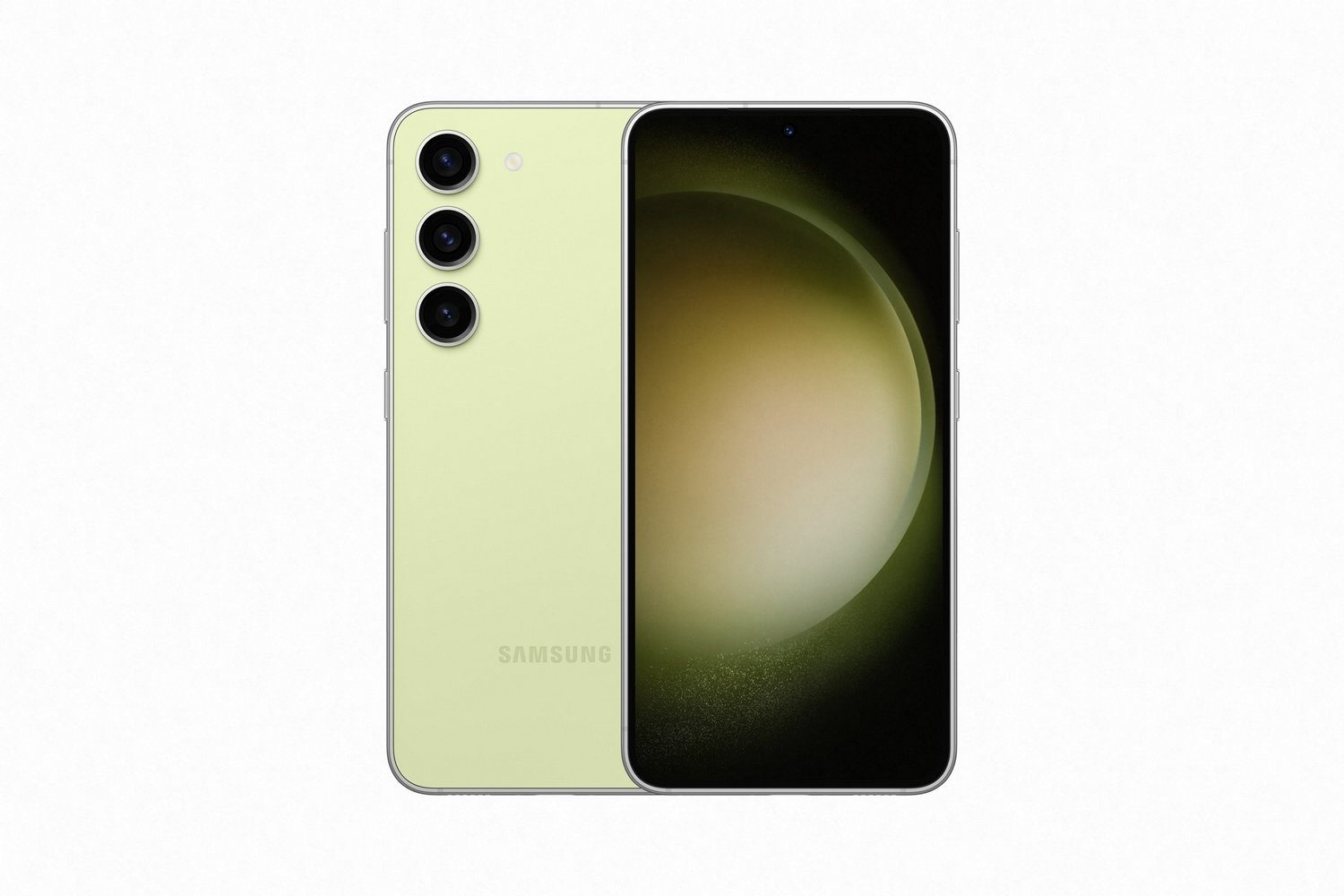
- Release date: 2023, February 01
- Colors: Phantom Black, Cream, Green, Lavender, Graphite, Lime
- Dimensions: 146.3 x 70.9 x 7.6 mm.
- Weight: 168 g.
- Screen: 6.1" in, 1080 x 2340, Dynamic AMOLED 2X
- Camera : Triple, 50MP
- Chipset: Qualcomm SM8550-AC Snapdragon 8 Gen 2 (4 nm)
- CPU: Octa-core (1x3.36 GHz Cortex-X3 & 2x2.8 GHz Cortex-A715 & 2x2.8 GHz Cortex-A710 & 3x2.0 GHz Cortex-A510)
- Memory: 128GB 8GB RAM, 256GB 8GB RAM, 512GB 8GB RAM
- Battery: 3900, Li-Ion, non-removable
- Network: GSM / CDMA / HSPA / EVDO / LTE / 5G
- Operating system: Android 13, One UI 5.1
- Sensors: Fingerprint (under display, ultrasonic), accelerometer, gyro, proximity, compass, barometer
If you are curious to find out all the details before reading the full review, visit the page for Samsung Galaxy S23 Specs, where you will find even the smallest detail about the phone.
Samsung Galaxy S23 Price
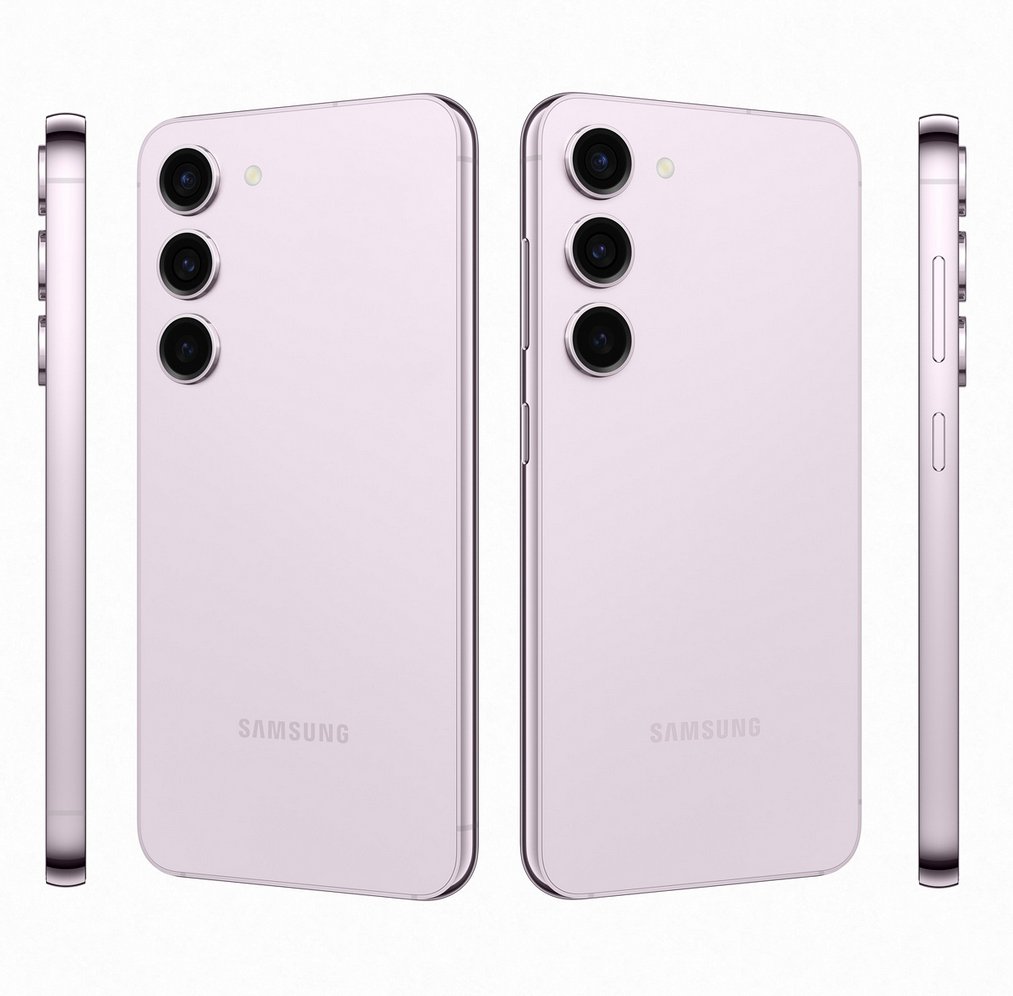
The Samsung Galaxy S23, along with the Galaxy S23 Plus and Galaxy S23 Ultra, were launched on February 1 and are now available for pre-order with a February 17 shipping date. The US price for the Galaxy S23 remains unchanged at $799.99, but there are price increases in Australia and the United Kingdom.
Those looking for more storage and a larger display can opt for the more expensive Galaxy S23 Plus or Galaxy S23 Ultra, which offers more memory and a taller camera sensor.
Samsung Galaxy S23 Design
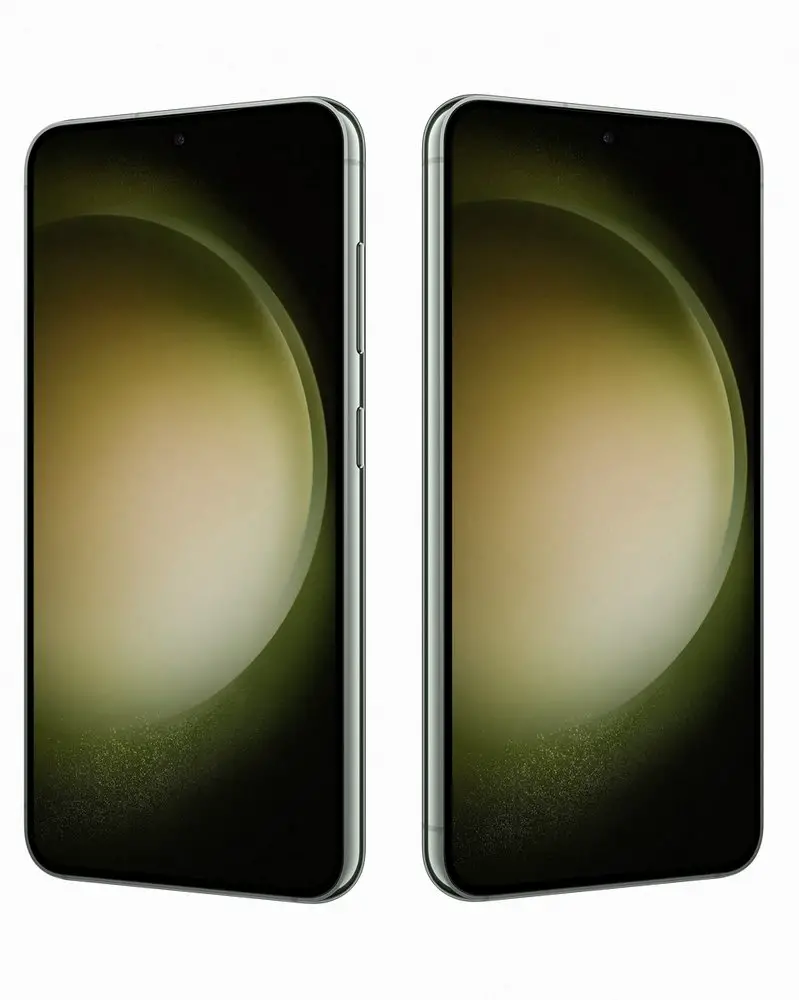
Despite the lack of a typical cropped camera design, the Samsung Galaxy S23 managed to retain most of its other design elements. The three rear cameras on the 6.1-inch frosted Gorilla Glass Victus 2 rear are located on the top left side. The phone's dimensions (70.86 x 146.3 x 7.62 mm) and weight (168 g) are almost unchanged from the previous model, making it a lightweight and compact phone with a slightly curved metal frame that makes it quite comfortable.
There are some minor changes such as relocating the power and volume buttons. The bottom of the phone has a centered USB-C port, microphone holes, speaker grill and physical SIM slot which are similar to the previous model.
For the first time, some elements of the Galaxy S23 are made from recycled materials, such as the volume and power buttons and the top speaker grill. Additionally, the Gorilla Glass Victus 2 has recycled glass and some of the phone's packaging is made from recycled materials. The plastic coating on the screen is also partially recycled.
Various colours are available including cream, black, lavender and green, with exclusive colours such as lime and graphite.
The Galaxy S23 series is IP68 rated, making them water and dust resistant.
Samsung Galaxy S23 Display
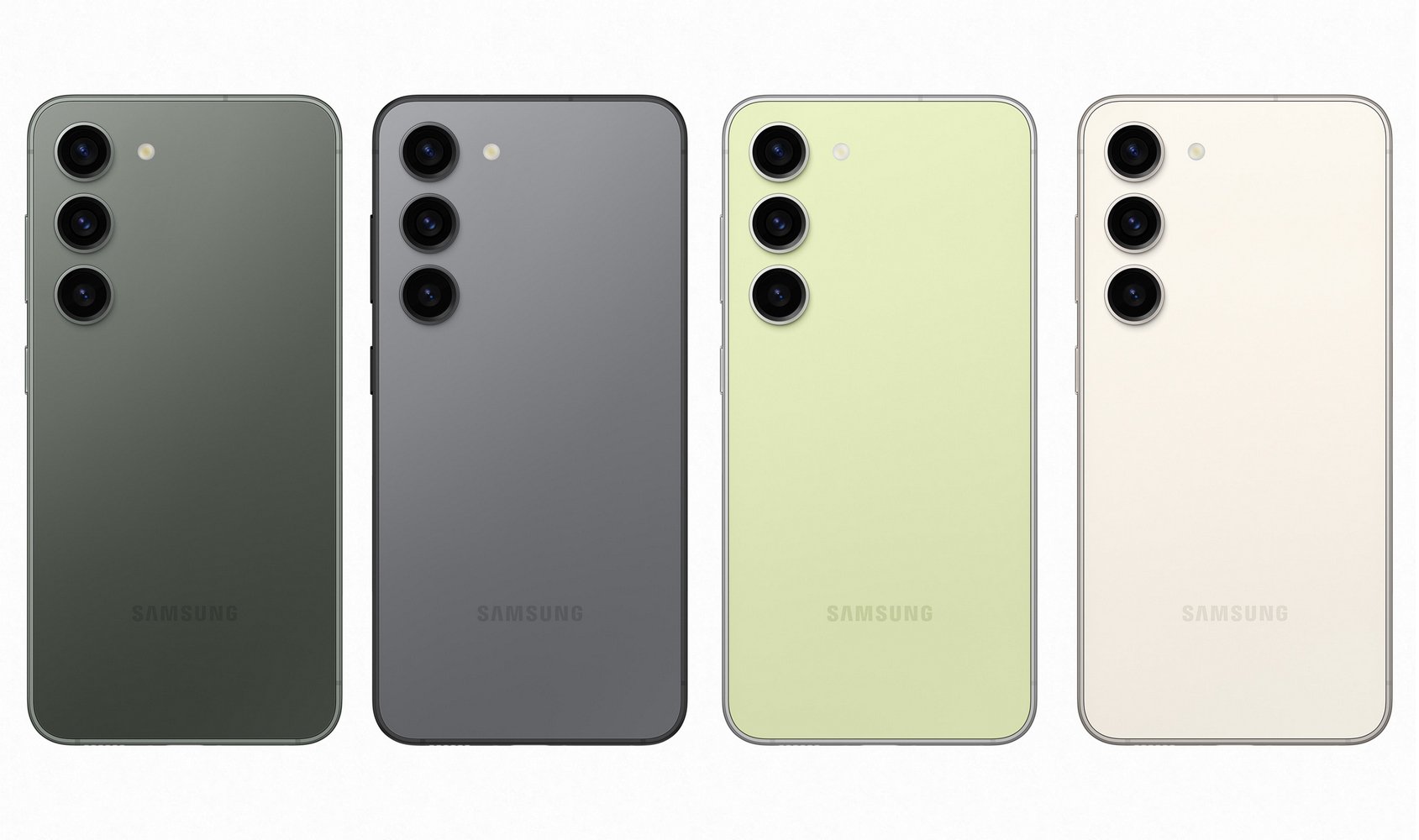
The Samsung Galaxy S23 boasts a higher pixel density compared to the Galaxy S23 Plus, with 425ppi compared to 393ppi on the latter. The 6.1-inch Dynamic AMOLED 2X Infinity-O FHD+ display is flat. It's surrounded by a small black bezel and is bright with a maximum of 1750 nits. The screen's refresh rate can be adjusted to match the user's activity, ranging from 48 Hz to a maximum of 120 Hz, and it also supports 240 Hz touch sampling for fast gaming response.
Samsung Galaxy S23 Cameras
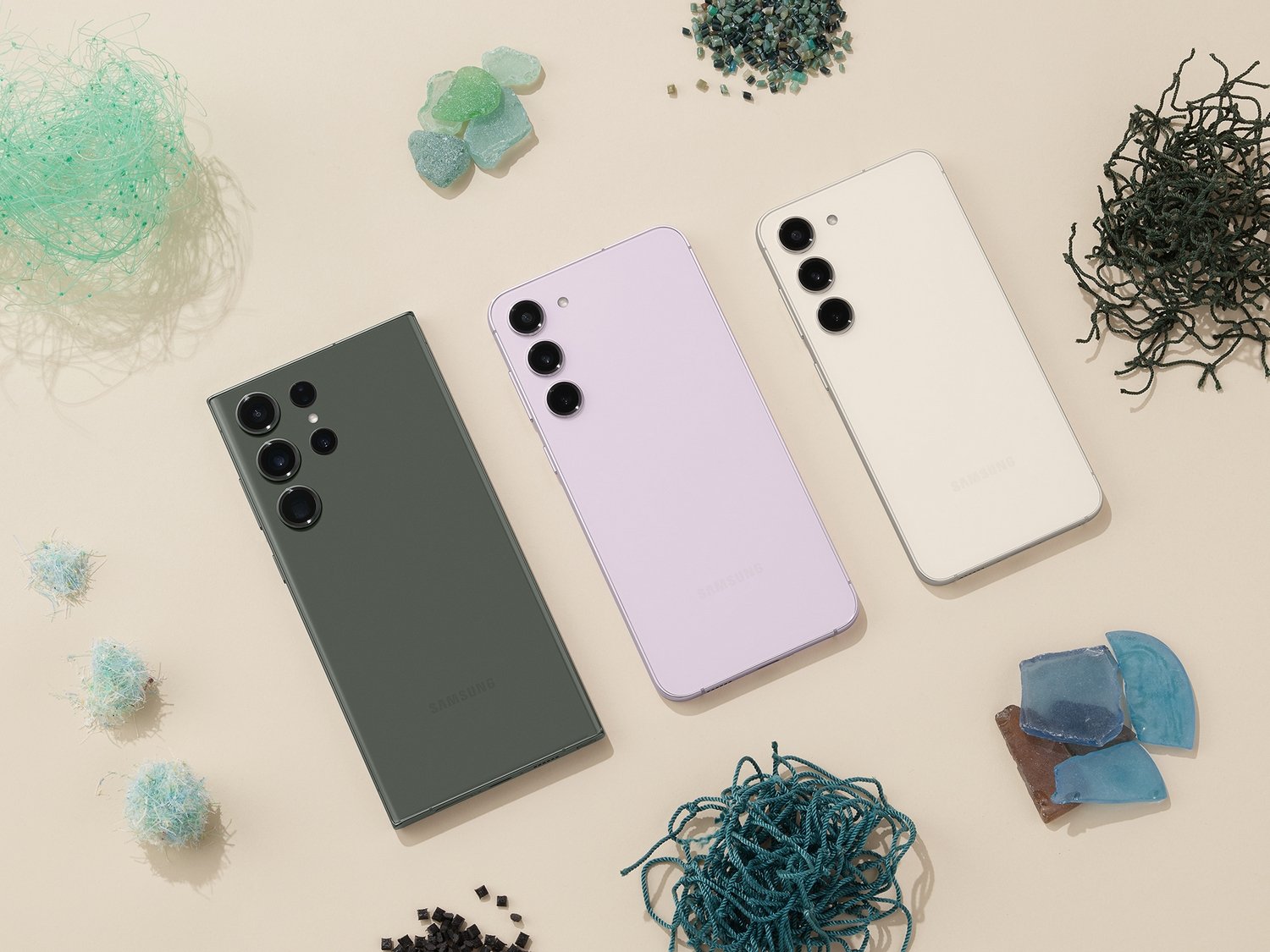
The three rear cameras are:
50MP f1.8 wide sensor with OIS and 85-degree viewing angle
12MP, f2.2 ultra-wide sensor with 120-degree viewing angle
10MP f2.4 telephoto sensor (3x optical zoom) with OIS and 36-degree viewing angle
If you shoot in good light all three cameras do very well. The main camera, with a 50MP prime wide-angle lens, actually captures 12.5MP photos by grouping 4 to 1 pixels. However, if you want to see more detail in your photos, you can opt for the 50MP mode, which is slightly slower.
The Samsung Galaxy S23+ has many of the same features as its predecessor, but there are some new additions, such as AstroHyperlpase, which lets you take pictures of moving stars.
To access this feature, you need to download the Expert RAW app within the camera settings, which is a little more complicated than it should be. Once you download the app, you can also access a 50-megapixel RAW file, which is an improvement over the Galaxy S22+'s 12-megapixel file.
The camera is comparable to that of the Galaxy S23 Plus.
The front of the device features a new 12MP f2.2 camera, touted as the "first Super HDR selfie camera" from Samsung, offering improved photos and video capture at up to 60fps instead of 30fps. The advantage of this generation is that all models, including the S23 Ultra, feature this module providing consistent quality when using a front-facing camera.
Samsung Galaxy S23 Performance and audio
The Samsung Galaxy S23 Plus, along with all S23 devices, runs on the Qualcomm Snapdragon 8 Gen 2 mobile platform for Galaxy, a customized version of the standard mobile processor that is overclocked to 3.36 GHz. It's worth mentioning that globally, every S23 now runs Qualcomm hardware, eliminating the discrepancy between Snapdragon and Samsung Exynos, which varies by region.
The sound when watching YouTube videos is pretty good. And with the addition of Dolby Atmos from the settings, the sound becomes even clearer and louder than expected.
The Galaxy S23 series is equipped with 5G capability. Despite the current market trend, Samsung hasn't emphasized satellite connectivity for the S23 line. This contrasts with Apple's inclusion of Emergency SOS via satellite in the iPhone 14 series and Qualcomm's demonstration of sending and receiving text messages via satellite with a Snapdragon 8 Gen 2 device at CES 2023.
The S23 and S23 Plus have an X70 5G modem capable of satellite communications according to Qualcomm, but Samsung has yet to announce those capabilities for the Galaxy S23 series. It's possible they'll become available through a software update and carrier support later in the year.
Samsung Galaxy S23 Software
The Samsung Galaxy S23 line comes with Android 13 and the Samsung One UI 5.1. Samsung has promised to deliver four years of OS updates and five years of security upgrades.
The software experience is similar to the S22 line, but with new features like improved Samsung Notes, Google Meet co-viewing, and enhanced security features.
Samsung Galaxy S23 The Battery
The Samsung Galaxy S23 comes with a 3900 mAH battery, which is 200 mAh larger than the Galaxy S22's battery, but still 100 mAh smaller than the Galaxy S21's battery. Presumably, this battery should last all day with regular use. The more efficient 4nm Snapdragon 8 Gen 2 and the extra mAh could extend battery life.
The phone supports 25W wired charging, fast wireless charging, and PowerShare wireless reverse charging.
Samsung Galaxy S23 Conclusion
The Samsung Galaxy S23 seems to be a compelling upgrade option for those with older phones, like the S20. However, for those with a newer phone like the Galaxy S21 or S22, the S23 may not offer enough new features to convince you to upgrade. However, the quality and durability of Samsung's flagship devices have improved, justifying the $800 price tag.
Samsung Galaxy S23 video review
Disclaimer: The information presented in this article is based on our team's personal experience with the Samsung Galaxy S23 and third-party sources. While every effort has been made to provide accurate and reliable information, readers should keep in mind that this is a subjective assessment. The writing of this article was not paid for or sponsored by Samsung.

